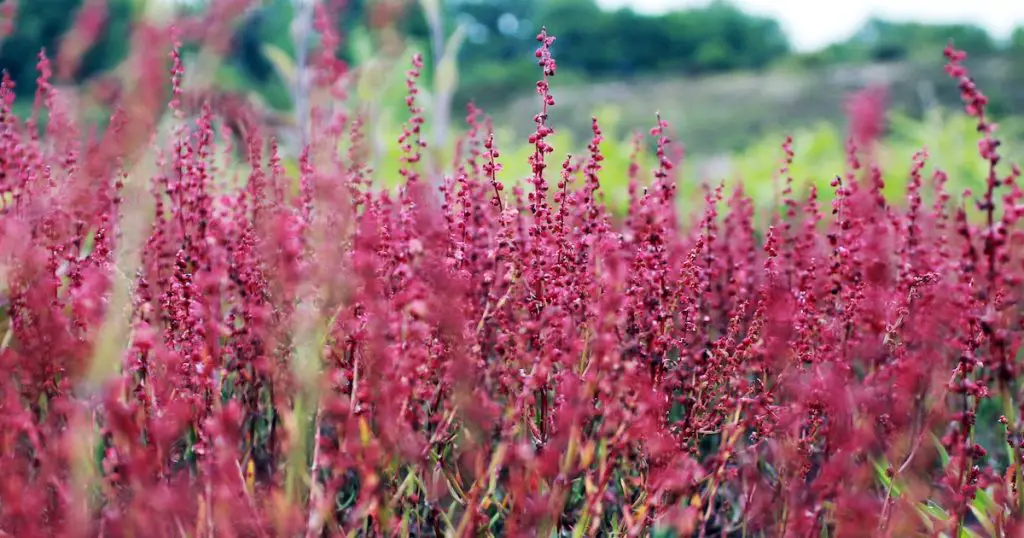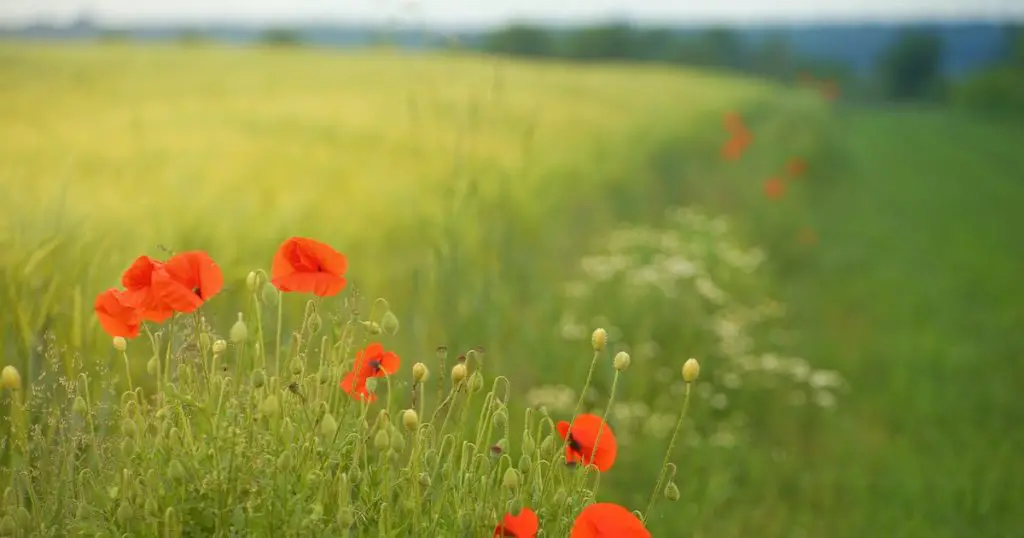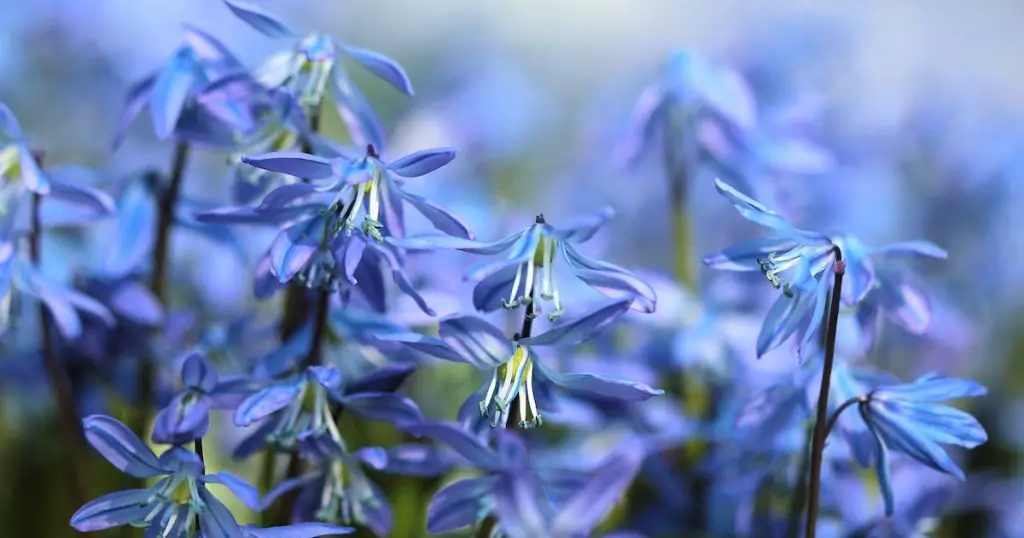Imagine hiking along a trail, every step unveiling nature’s colorful palette. This isn’t a far-off fantasy but the reality of seasonal wildflower blooms along Prescott National Forest trails.

As the seasons change, so do the hues, offering locals and tourists alike an ever-changing mosaic of vibrant colors.
The Geological and Climatic Framework
Prescott National Forest’s breathtaking landscapes are a product of millennia of geological activity and climatic nuances. Carved by ancient rivers, shaped by tectonic forces, and sculpted by the elements, the region boasts a diverse tapestry of terrains, from rocky outcrops to fertile meadows. Its climate, a delicate balance of seasonal variations, has played an instrumental role in shaping its flora and fauna.
The dance of the sun, rain, wind, and snow over eons has birthed a unique ecosystem, where each element, be it a towering pine or a tiny wildflower, is a testament to the region’s rich geological history and the intricate climatic ballet that continues to mold it.
Understanding Prescott’s Topography
The elevation varies dramatically in Prescott, from gentle meadows to steep mountainous terrains. This diverse topography means different microclimates and each of these microclimates supports its own set of wildflowers.
It’s this varied elevation that ensures a longer bloom season, as flowers at different heights bloom at different times.
How the Monsoon Season Influences the Blooms
Monsoons in Arizona are a force of nature. They bring life-giving rain, essential for wildflowers. After a monsoon shower, the forest’s earthy scent mixes with the fragrance of blossoming flowers, creating an experience that’s nothing short of magical.
But more than just their beauty, these flowers signify the health of the ecosystem, indicating good rain and fertile soil.
Spring Blooms: A New Beginning
In the heart of Prescott National Forest, spring announces its arrival with a gentle touch and a profusion of color. As the chill of winter recedes, the earth stirs awake, and buds that were once tightly closed begin to unfurl. Wildflowers carpet the meadows in a myriad of hues, each bloom symbolizing nature’s relentless spirit and the promise of new beginnings.
The soft trills of birds return, and the air is thick with the scent of blossoming flora. Amidst this renewal, the forest stands as a testament to life’s cyclic nature, reminding us that after every end, there’s a fresh start waiting, vibrant and full of hope.
Common Flowers that Signal the Spring
As the snow recedes, flowers like the Blue Dick, Golden Fleece, and the Red Maids start emerging. These early bloomers, with their vibrant hues, attract pollinators, ensuring the continuity of their species. While these are just a few, the forest floor is painted with myriad shades, each with its own story.
Certain trails, such as the Thumb Butte Loop and the Watershed Trails, become particularly vibrant during spring. The unique soil composition and sun exposure of these trails make them a hotspot for springtime blooms.

Summer’s Radiance: From Monsoons to Meadows
The crescendo of Prescott National Forest’s yearly symphony is unmistakably the summer, where the interplay of monsoons and meadows takes center stage. As the skies open, they bring with them not just life-giving rains but a promise of rebirth. With every downpour, dormant seeds awaken, rivers gush with renewed vigor, and meadows burst into a riot of colors.
Wildflowers bloom in abundance, each vying for the attention of wanderers and pollinators alike. The air, heavy with the scent of fresh earth and blossoms, sings of nature in its prime. Summer in the forest is a radiant affirmation of life’s undying cycle of rejuvenation and growth.
Influence of the Summer Monsoons
As we touched on before, monsoons are life-givers. By summer, they drench the forest, preparing the ground for a fresh cycle of blooms. These rains, though short-lived, provide enough sustenance for many wildflowers. Plants like the Desert Mariposa and the Orange Globe Mallow thrive, painting the landscape in warm, sun-kissed colors.
While some flowers wither in the heat, others like the Scarlet Bugler and Desert Sunflower burst forth. They’re not just beautiful; they’re hardy, evolved to survive and thrive under the blazing sun. If you are keen on photographing or witnessing these resilient blooms, trails like Granite Mountain offer some of the best sights.
Autumn Hues: Nature’s Grand Finale
In the embrace of Prescott National Forest, autumn unfurls a spectacle of colors that’s nothing short of mesmerizing. As the days grow shorter, the green tapestry of summer yields vibrant reds, oranges, and golds, painting a masterpiece with every leaf and petal. This transformation isn’t just a visual delight; it’s nature’s grand finale before the calm of winter.
Each rustling leaf underfoot and every whisper of the cool breeze tells tales of seasons past and those yet to come. Autumn in the Forest is a poignant reminder that endings can be beautiful, that there’s magnificence in transitions, and that change, when embraced, can yield breathtaking results.
Flowers that Mark the Onset of Cooler Days
As the temperatures drop, flowers like the Goldenrod and the Western Blue Virginsbower make their appearance. They signal the coming of winter, and their deep colors contrast beautifully against the backdrop of falling leaves.
While almost all of Prescott’s trails are worth exploring in the fall, the Goldwater Lake Trail stands out. With its mix of trees and wildflowers, it’s a haven for those looking to experience autumn’s full glory.
Winter: The Subtle Charm
As winter blankets the Prescott National Forest, the landscape undergoes a serene transformation. The once vibrant trails adorned with wildflowers now lie dormant, wrapped in a hush of snow and frost. But this quietude has its own allure.
The stark contrast of barren trees against the white expanse, the crystalline formations on ponds, and the muted hues of the underbrush paint a picture of tranquil beauty.
It’s a time when nature retreats, rejuvenates, and readies itself for another cycle of life. This season, while seemingly lifeless, is replete with subtle charms, reminding us that every phase of nature, even its slumber, has a beauty uniquely its own.
Flowers that Brave the Winter Chill
Despite the chill, flowers like the Manzanita and the Christmas Berry blossom, their deep reds and purples add charm to the white snow-covered landscape. These flowers, though fewer in number, are a testament to nature’s resilience.

It’s a rare sight, but when you do see wildflowers poking through a carpet of snow, the visual is unforgettable. Trails like Constellation Trails offer such winter wonders, making them a must-visit during the colder months.
Rare and Endangered Species
Nestled within the vast expanses of the Prescott National Forest, one can find a treasure trove of biodiversity, including several rare and endangered species. These unique flora and fauna, often hidden from the casual observer, represent nature’s fragility and resilience. Their rarity may be attributed to factors like habitat loss, climate change, or human intervention.
Preserving these species is paramount, as each plays a crucial role in maintaining the ecological balance of the forest. Their presence serves as a poignant reminder of the delicate tapestry of life, where each thread, no matter how seemingly insignificant, holds immense value in the grand tapestry of the ecosystem.
Wildflowers to Witness Once in a Lifetime
Species like the Prescott Lupine or the Arizona Waterleaf are rare. While they’re a treat for the eyes, they’re also a reminder of the fragile state of our ecosystems.
Prescott National Forest is proactive in its conservation efforts. From controlled burns to reduce invasive species to habitat restoration projects, there’s a concerted effort to ensure that these rare flowers continue to thrive.
The Butterfly Effect: Pollinators and Flowers
The dance between pollinators and flowers is one of nature’s most enchanting symphonies. Just as butterflies, bees, and hummingbirds rely on flowers for sustenance, flowers count on these pollinators for reproduction. Each flutter, buzz, and hover has far-reaching consequences, much like the proverbial butterfly effect.
When a bee alights on a blossom, it’s not just extracting nectar; it’s facilitating the transfer of pollen, ensuring the continuation of plant species. This intricate web of interdependence underscores the delicate balance of our ecosystem.
In places like Prescott National Forest, witnessing this mutualism reminds us of the harmonious connections threading through all living beings.
Symbiotic Relationship Between Insects and Wildflowers
Wildflowers and pollinators like butterflies, bees, and hummingbirds share a deep bond. While flowers provide nectar, these pollinators help in cross-pollination, ensuring genetic diversity.
Morning hours, especially during spring and summer, are buzzing with activity. Trails like Willow Creek Reservoir are perfect to observe this symbiotic dance.
Trail Etiquettes: Leave No Trace
Trekking through nature’s corridors, especially areas adorned with wildflowers is a privilege, and with it comes the responsibility to minimize our impact. The “Leave No Trace” philosophy embodies this respect for the environment. It urges hikers and explorers to ensure that their presence doesn’t harm or alter the natural setting.
This means packing out what you bring in, sticking to designated paths to avoid trampling delicate flora, refraining from picking plants and being mindful of the habitats of the wildlife. By adhering to these simple yet vital principles, we ensure that the pristine beauty and ecological balance of areas like Prescott National Forest remain undisturbed for future generations.
Tips for Eco-Friendly Hiking and Photography
- Stay on designated paths.
- Do not pick the flowers.
- Use eco-friendly sunscreens and bug sprays.
- Be mindful of where you set your equipment when photographing.
Best Practices for Wildflower Photography
Wildflower photography is a delightful intersection of art and nature. To truly capture the essence of these delicate beauties, one must consider the interplay of light, angles, and surroundings. The golden hours of dawn and dusk often offer a soft, diffused glow, perfect for highlighting the intricacies of petals and stems.
Furthermore, while equipment and technique matter, so does a photographer’s ethos; treading lightly and respecting the natural habitats ensures that these floral wonders continue to inspire for years to come. Whether a novice with a smartphone or a professional with top-tier gear, the key lies in observing, appreciating, and immortalizing without disturbing.
Capturing the Perfect Shot: Time and Techniques
Morning and late afternoon light often provide the most flattering illumination for flowers. Side-lighting can accentuate textures while backlighting can bring out the translucence of petals.

Furthermore, using a shallow depth of field can make your subject stand out against a beautifully blurred background. For detailed guides, PhotographyLife provides great tips on wildflower photography.
Gear Recommendations for Every Level
Whether you’re a beginner or a seasoned pro, choosing the right equipment can make a world of difference:
- Beginner: Smartphone with a clip-on macro lens.
- Intermediate: DSLR or mirrorless camera with a dedicated macro lens.
- Professional: Full-frame camera with a specialized macro lens, tripod, and external flash for fill light.
Foraging: A Word of Caution
While the allure of nature’s bounty can be irresistible, foraging, especially for wildflowers, demands a deep respect for the environment. Picking a single bloom might seem harmless, but it disrupts the delicate balance of ecosystems.
These flowers not only beautify landscapes but also play pivotal roles in pollination, provide sustenance for wildlife, and contribute to the genetic diversity of plant species.
Before embarking on any foraging adventure in Prescott National Forest or elsewhere, it’s vital to educate oneself, adhere strictly to guidelines, and prioritize the health and longevity of the natural world over momentary pleasures.
The Delicate Balance of Nature and Human Intervention
While a single flower might seem insignificant, removing it can have ripple effects. Flowers are food for pollinators and essential for the reproduction of the plant. The National Park Service delves deeper into why wildflower picking can be detrimental.
Letting wildflowers be is about more than just preserving their beauty; it’s about ensuring the survival of an ecosystem. Remember, each flower plays a role, from feeding pollinators to enriching the soil once they decompose.
Engaging in Citizen Science
Being a passive observer is wonderful, but for those looking to get more involved, citizen science offers an avenue.
Platforms like iNaturalist allow enthusiasts to record and share their observations. By doing so, you contribute to a larger database that helps scientists understand patterns, changes, and more.
Popular Projects and Apps to Get Started
There are several projects focused on wildflowers:
- Project BudBurst: Aims to collect data on when plants leaf out, flower, and fruit.
- Wildflower Observer: Focuses on tracking the spread and growth of specific species.
Both these projects, among others, rely on regular people, turning the simple act of hiking into a meaningful contribution to science.
Frequently Asked Questions: Seasonal wildflower blooms along Prescott National Forest trails
When is the absolute best time to visit Prescott for wildflowers?
Typically, late spring to early summer, but it varies yearly based on precipitation and temperature.
Can you pick wildflowers in the Prescott National Forest?
It’s best to leave them untouched. Picking them can disrupt the ecosystem and is often prohibited.
Are guided tours available for wildflower enthusiasts?
Yes, several local groups and naturalists offer seasonal tours. It’s a great way to learn while exploring.
What are some other attractions near Prescott’s wildflower trails?
Prescott offers historic sites, lakes, and cultural festivals to enrich your visit.
Are there any accessibility options for differently-abled individuals to enjoy the blooms?
Many trails are ADA-compliant, offering everyone the chance to experience the beauty.
Summary: The Lasting Impact of Prescott’s Wildflower Trails
Prescott National Forest, with its seasonal wildflower blooms, is more than just a visual treat. It’s a testament to the wonders of nature, the interconnectedness of life, and the importance of conservation. Every trail, every bloom, and every insect tells a story of evolution, survival, and beauty.
As visitors, we’re not just witnesses but also custodians of this legacy, ensuring that this floral symphony continues for generations to come. Whether you’re a photographer, a hiker, or simply someone looking to lose themselves in nature’s splendor, Prescott awaits with open arms and vibrant blooms.



Leave a Comment
You must be logged in to post a comment.